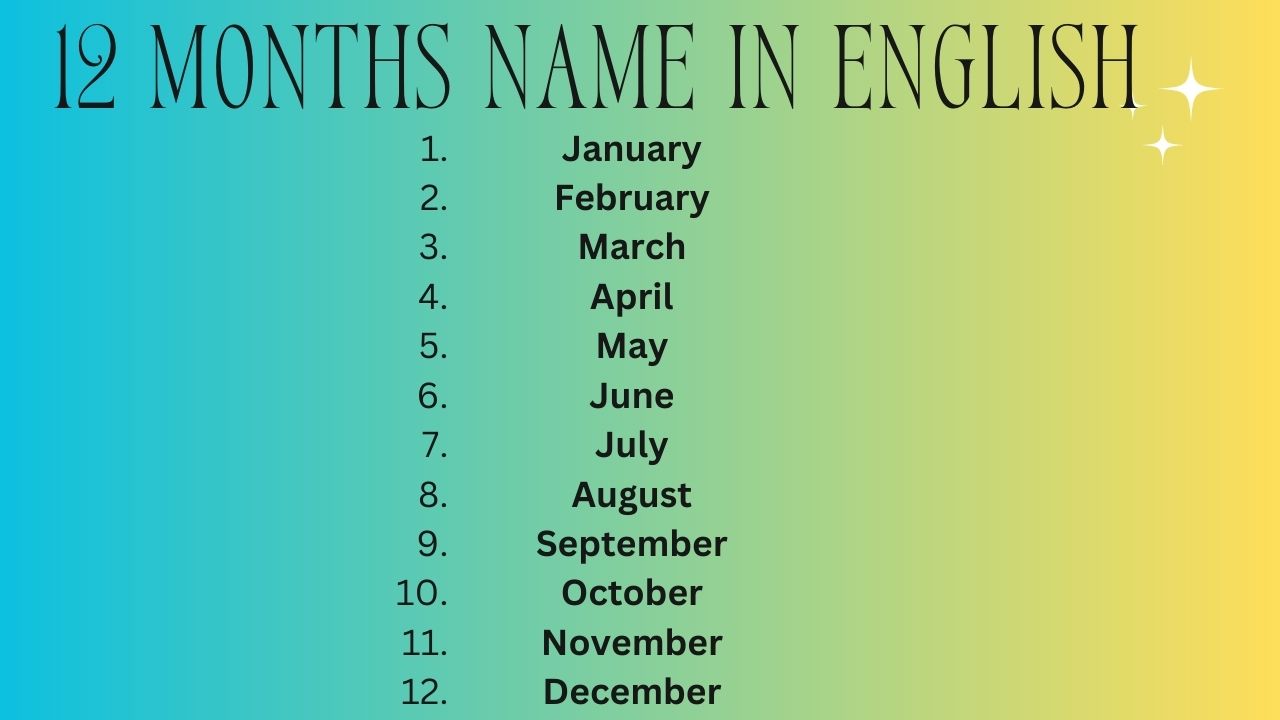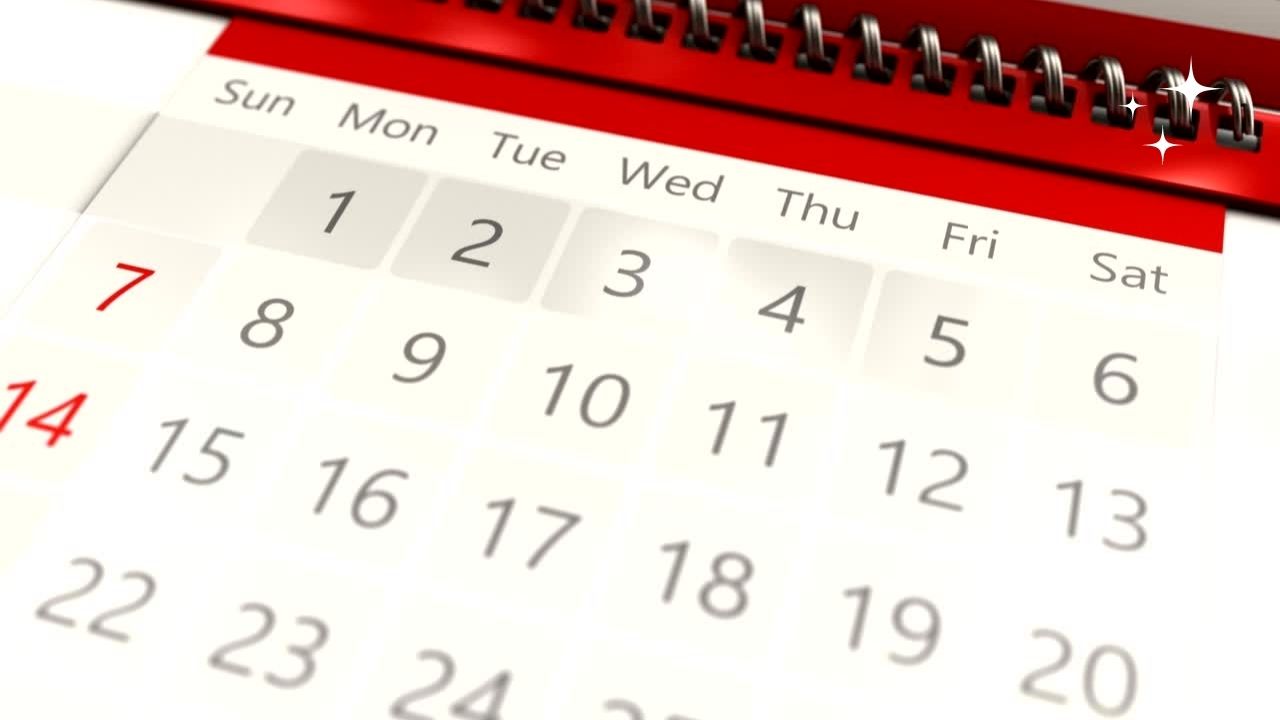12 Months Name in English — Month of the Year (A Comprehensive Insight)
Wants to learn more about the Months Name in English? Explore the fascinating history and significance of the 12 months in the Gregorian calendar.
From the meaning of months from January to December, learn the origins, meanings, and more.
Keep reading to discover the months of the year!
But before I start with details;
Did you ever wonder how our calendar came to be? The calendar we use today, known as the Gregorian calendar, was introduced by Pope Gregory XIII in 1582. The months are mostly named after Roman deities, emperors, and numbers.
We all know how time flies. One moment you’re ringing in the New Year, and the next, you’re wrapping gifts for Christmas! In the blink of an eye, 12 months pass us by.
But have you ever stopped to think about the months of the year list and where these names come from? Well, buckle up, because we’re diving right in!
Deeper Dive into 12 Months Name in English
Know the meaning of months from January to December:
January
January – a time for resolutions! The Roman god Janus had two faces, one looking to the past and the other to the future.
February
February and its short days symbolize purification. In ancient Rome, Februa was a cleansing ritual held on February 15.
March
The third month, March, was named for Mars, the Roman god of war. It was the first month of the year in the Roman calendar.
April
April might come from the Latin verb “aperire,” which means “to open,” like buds opening in spring.
May
May is a blooming good time! It might be named after the Greek goddess Maia, who oversaw the growth of plants.
June
In June, love is in the air. It’s named after Juno, the protector of marriage.
July
July was named in honor of Julius Caesar in 44 B.C. Talk about a tribute!
August
August honors Emperor Augustus. He named it after himself in 8 B.C., following Julius Caesar’s example.
September
September – the Latin word ‘septem’ means seven. This month is full of nostalgia.
October
October comes from ‘octo,’ the Latin word for eight. Time to bundle up!
November
November hails from ‘novem,’ the Latin for nine. It’s a time to give thanks.
December
December is derived from ‘decem,’ meaning ten. Let’s celebrate the end of the year!

English Names For The Months of The Year
| Month Names | Short Names | Number of Days in English |
|---|---|---|
| January | Jan | 31 |
| February | Feb | 28 (and 29 in leap years) |
| March | Mar | 31 |
| April | Apr | 30 |
| May | May | 31 |
| June | Jun | 30 |
| July | Jul | 31 |
| August | Aug | 31 |
| September | Sep | 30 |
| October | Oct | 31 |
| November | Nov | 30 |
| December | Dec | 31 |
The Seven Days Name in English

The names of the days in English are rooted in celestial bodies and Norse and Roman mythology. Here’s a closer look:
- Monday – Moon’s Day, a tribute to the shining celestial body.
- Tuesday – Named after the Norse god Tiu, representing Mars.
- Wednesday – Woden’s Day, named after Odin, the supreme Norse god.
- Thursday – Thor’s Day, dedicated to the Norse god of thunder.
- Friday – Named after Frigg or Freya, the Norse goddess of love.
- Saturday – Saturn’s Day, honoring the Roman god of agriculture.
- Sunday – Sun’s Day, paying tribute to the glowing sun.
Months name in English Video
FAQs
How many months are there in a year?
There are 12 months in a year. These months make up the calendar year in the Gregorian calendar system, which is used by most of the world. The 12 months are January, February, March, April, May, June, July, August, September, October, November, and December. Each month has varying numbers of days, ranging from 28 to 31, and together they total 365 days in a common year or 366 days in a leap year.
What are the 12 months in order?
The order of the months in a year follows the Gregorian calendar, starting with January and ending with December. Here’s the complete list in order:
- January
- February
- March
- April
- May
- June
- July
- August
- September
- October
- November
- December
How many months are there in a year?
There are 12 months in a year, making up the calendar year in the Gregorian system used by most of the world.
What is December named after?
December gets its name from the Latin word “decem,” which means ten. This might seem odd for the twelfth month of the year, but it makes sense when you consider that the ancient Roman calendar began with March, making December the tenth month.
With the reform of the calendar, December became the twelfth month, but the original name stuck. Nowadays, December is often associated with winter in the Northern Hemisphere, holidays, and the end of the calendar year.
What is November named after?
November gets its name from the Latin word “novem,” which means nine. In the ancient Roman calendar, November was indeed the ninth month of the year. However, with the later introduction of January and February at the beginning of the calendar, November became the eleventh month, but the original name remained.
November is often associated with the transition from fall to winter in the Northern Hemisphere, and it hosts various holidays and observances in different cultures.
Who are July and August named after?
July and August are named after two prominent figures from ancient Roman history:
- July: This month is named after Julius Caesar, the renowned Roman general and statesman. In 44 B.C., the Roman Senate renamed the month of Quintilis to July in his honor, as it was the month of his birth.
- August: This month is named after Emperor Augustus, the first emperor of Rome and the grandnephew and adopted son of Julius Caesar. The Senate decided to rename the month of Sextilis to August in 8 B.C. to honor him.
These name changes reflect the significant contributions and lasting legacies of both Julius Caesar and Augustus in Roman history and culture.
How many months have 28 days?
Every single one of the 12 months in a year has at least 28 days. Whether it’s January or June, each month has a minimum of 28 days. Some have 30, and others have 31, except for February, which usually has 28 days but has 29 in a leap year. Gotcha! It’s one of those questions that keep you on your toes!
How many days in February?
February typically has 28 days, but in a leap year, it has 29 days. Leap years occur every four years, with some exceptions.
How many days in March?
March has 31 days. Simple as that!
How many days are in May?
May consists of 31 days. It’s the fifth month of the year in the Gregorian calendar, and its name is believed to be derived from Maia, an ancient Greek goddess associated with growth and fertility. May’s 31 days are filled with the blossoming of flowers and the warming of temperatures in many parts of the world, signaling the approach of summer in the Northern Hemisphere.
How many days are in July?
July has 31 days. Named in honor of Julius Caesar, this month falls in the heart of summer in the Northern Hemisphere, often bringing warm weather and opportunities for outdoor activities and celebrations. It’s a time for vacations, barbecues, and enjoying the sunshine!
How do I learn the month’s name?
Learning the names of the months can be fun and straightforward with a few different approaches. Here’s a mix of methods that might suit your style:
- Sing a Song: There are many catchy songs available online specifically designed to help people remember the months of the year. Singing along can make learning them a breeze.
- Use Mnemonics: Creating a mnemonic or a fun phrase can help. For example, you might create a story that involves something memorable about each month.
- Create a Calendar: Making a physical calendar and decorating it can engage you with the months visually. Add stickers, drawings, or notes for holidays and family birthdays.
- Practice with Flashcards: Write the name of each month on a flashcard, and practice regularly until you’ve got them all down.
- Use Apps and Educational Games: There are plenty of educational apps designed to make learning fun. Some are aimed specifically at teaching the months of the year.
- Watch Videos: Educational platforms often have engaging videos that teach the months through stories or animations.
- Incorporate into Daily Life: Make a habit of referring to the months by name daily. For example, when planning your schedule, always use the month names.
- Learn in Order: Start by memorizing the months in sequential order from January to December, as this may provide a logical flow.
- Associations with Holidays and Seasons: Associating months with specific holidays, seasons, or events can create a mental link that aids memory.
- Repeat, Repeat, Repeat: Like learning anything new, repetition is key. Say the months out loud regularly, write them down, or test yourself until they become second nature.
Note, everyone’s learning process is unique, so don’t hesitate to try different methods to see what resonates with you. The key is to have fun with it and incorporate the learning into your daily routine. In no time at all, you’ll have the months down pat!
Final Thoughts
From the origins of the Gregorian calendar to the rich history of the 12 months’ names in English, understanding our calendar’s background gives us insight into our past. The 7 days name in English likewise pays homage to celestial bodies and ancient myths.
So, next time you glance at the calendar, remember the profound history and culture interwoven into the very fabric of our daily lives. It’s not just a list of dates; it’s a legacy!
